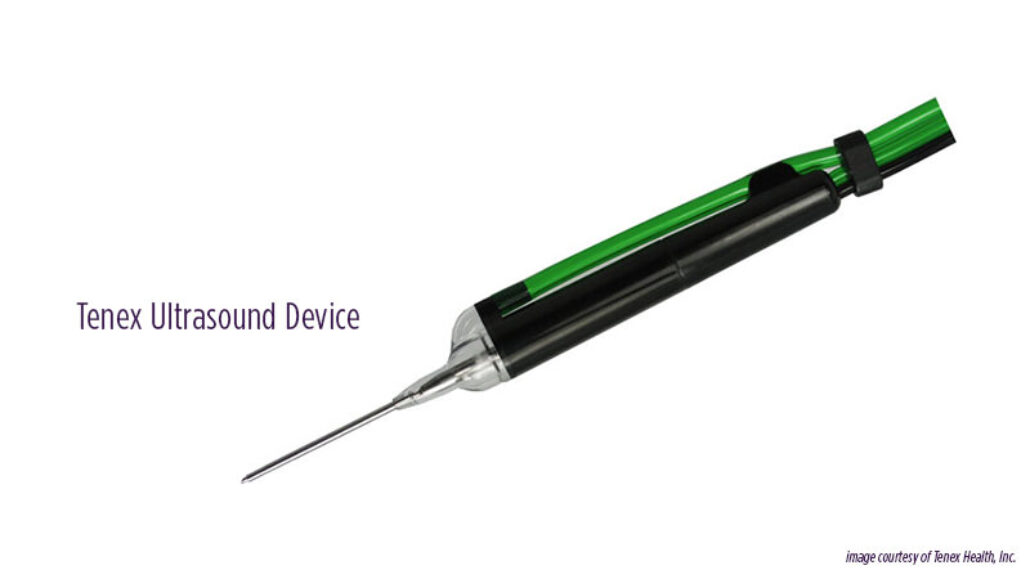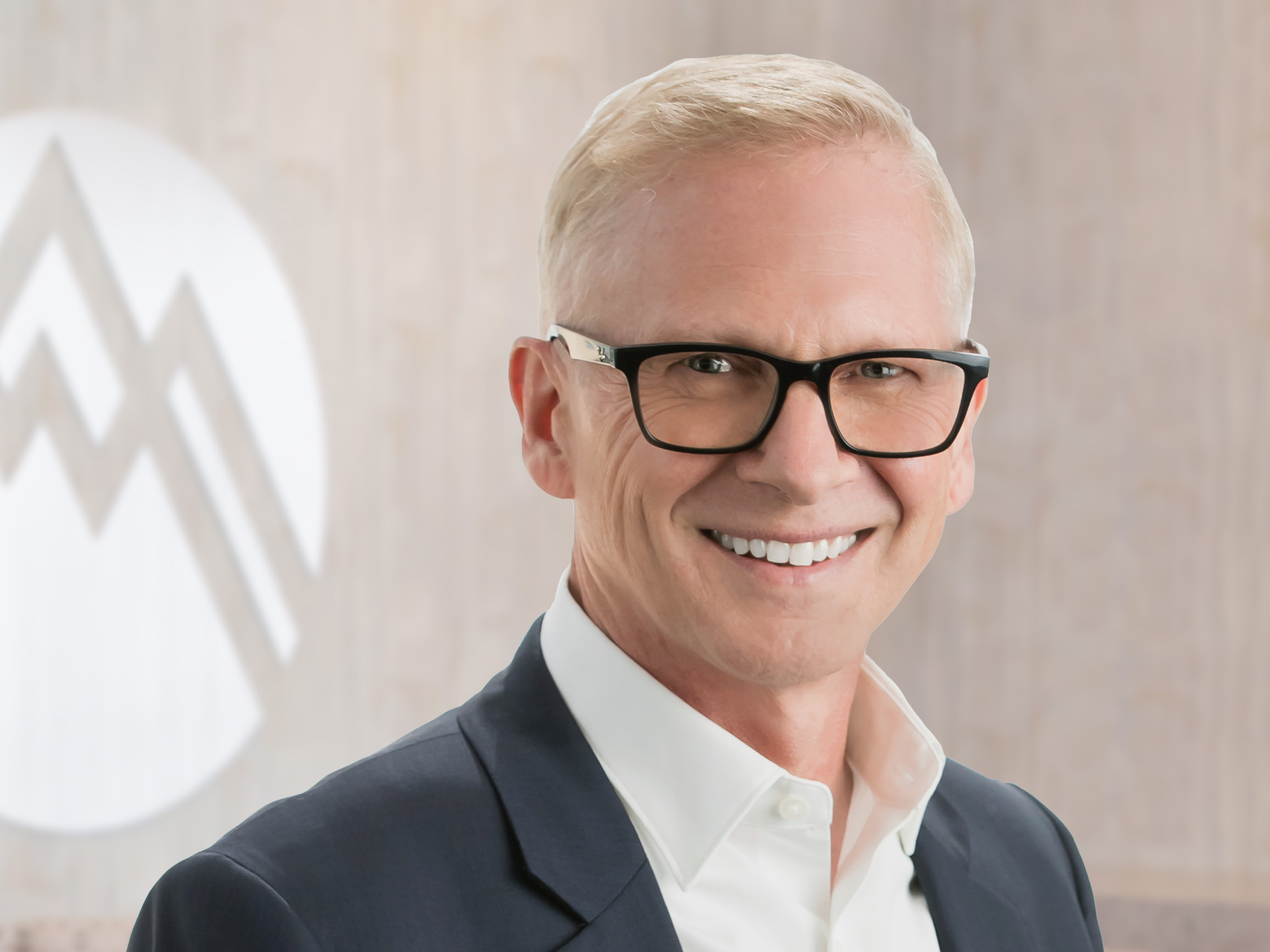Tenex technology is a minimally invasive new treatment developed to treat chronic tendon pain. Dr. Scofield explains how this new procedure is used to remove the painful scar tissue that causes tendinopathy.
What is tendinopathy?
Tendinopathy, or chronic tendon pain, is caused when a tendon develops painful scar tissue in response to an acute or overuse injury. In the past when pain didn’t resolve with conservative treatment, the only option was an invasive surgical procedure to scrape out the scar tissue on the tendon. Tenex technology offers a minimally invasive alternative for removing painful tendon tissue.
A nonsurgical alternative
“Until now, we didn’t have a treatment, other than surgery, for patients who did not improve with conservative treatments such as physical therapy and injections,” explains Summit sports medicine physician Dr. Kirk Scofield. “The Tenex procedure uses a new ultrasonic tool and ultrasound imaging guidance to accomplish some of what’s been only done with surgery in the past. Recently, I traveled to spend three days at the University of Iowa working and observing Dr. Mederic Hall, one of the sonographers at the forefront of developing these new ultrasound-based tendon treatments, and am very excited about it.”
Using ultrasound in new ways
Tenex uses ultrasound in two independent and unrelated ways: first, as an imaging tool to identify the bad tendon and visualize the procedure, and as an energy source to power the pen-like device that cuts and removes scar tissue on the tendon.
“Ultrasound has been used for some time as an imaging tool to guide procedures,” explains Dr. Scofield. “What’s new is the use of ultrasound energy in the Tenex device to remove diseased tissue. The Tenex tool is shaped like a pen, with a needle within a needle. The inner needle moves back and forth like a tiny jackhammer at 28 kilohertz, or 28,000 times a second, creating an ultrasonic wave of energy. Moving only seven-thousands of an inch, the needle breaks up a credit card thickness of scar tissue while a saline flushing system inside the outer needle is used to suck the tissue debris up through the needle and flush it out.”
Healthy tissue stays intact
A remarkable feature of this ultrasound tool is that it resonates at a frequency that will preferentially break up diseased tendon without harming healthy tendon tissue. “There’s a big differential in terms of the amount of energy that diseased tissue can withstand before it’s debrided and destroyed, compared to healthy tissue,” explains Dr. Scofield. “The intact collagen fibers that make up a normal healthy tendon have more tensile strength and flexibility. When the device is used properly, healthy tendon fibers aren’t broken by the energy; in a sense they vibrate out of the way.”
Performed by highly-skilled Summit specialists
Summit Orthopedics will be one of only a handful of Twin Cities practices offering Tenex treatment. “Identifying the scar tissue under ultrasound guidance is probably the most important skill a physician needs to perform this procedure,” says Dr. Scofield. “Operating the Tenex needle requires dexterity, but understanding the anatomy under ultrasound and distinguishing between pathologic, abnormal tendon and normal tendon requires expertise and experience. There’s a bit of a learning curve. I have about five years of experience with musculoskeletal ultrasound, and perform around 250 diagnostic and procedural scans yearly.
“With Tenex,” concludes Dr. Scofield, “we have a new minimally invasive option to offer patients who’ve tried conservative treatments without improvement for at least four months. Initial studies of Tenex procedure outcomes are very promising. Patients reported a 100 percent satisfaction rate in the most extensive study, which was done on elbow tendons. None of them required further procedures, and all of them were returned to full function, which they maintained pain-free at a three-year follow-up.”
Summit Orthopedics offers comprehensive sports medicine expertise
From Olympians to pro athletes to kids in youth sports and those that just want to be more active—Summit Orthopedics delivers expert care by fellowship-trained sports medicine physicians. If you are recently injured or concerned about ongoing pain, Summit Orthopedics sports medicine specialists have the expertise to evaluate your discomfort and develop a plan to quickly and safely help you get back to being active.
Start your journey to stronger, healthier athletic condition. Find your sports medicine expert, request an appointment online, or call us at (651) 968–5201 to schedule a sports medicine consultation.
Summit has convenient locations across the Minneapolis-St. Paul metro area, serving Minnesota and western Wisconsin. We have state-of-the-art centers for comprehensive orthopedic care in Eagan, MN, Vadnais Heights, MN, Plymouth, MN, and Woodbury, MN, as well as several additional community clinics.
More resources for you
- Ask Dr. Scofield: What’s the Difference Between Tendinitis and Tendinopathy?
- Summit Offers New Treatment Option For Chronic Tendon Pain
- Ask Dr. Scofield: What Are the Symptoms of Tendinopathy?
- Ask Dr. Scofield: Which Tendon Treatment Is Right for Me?

